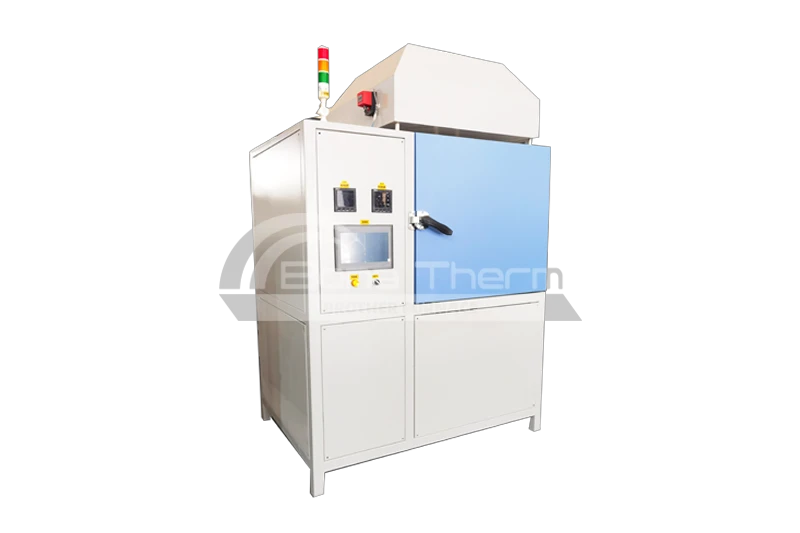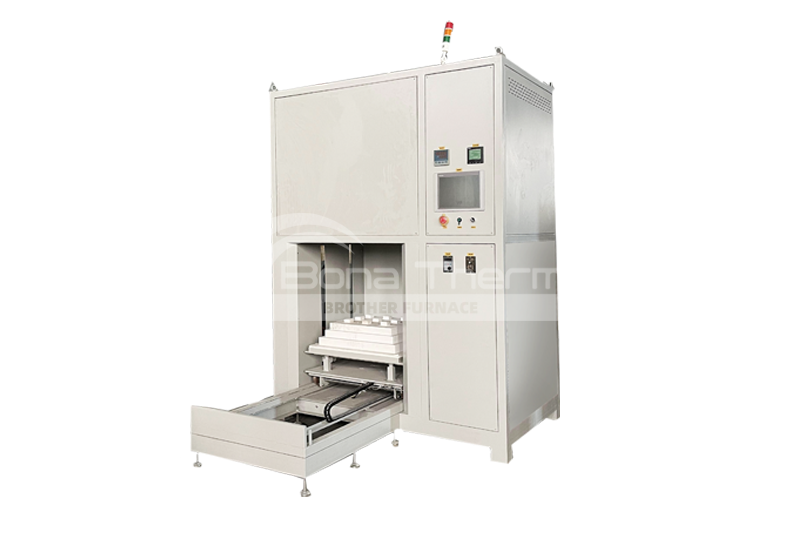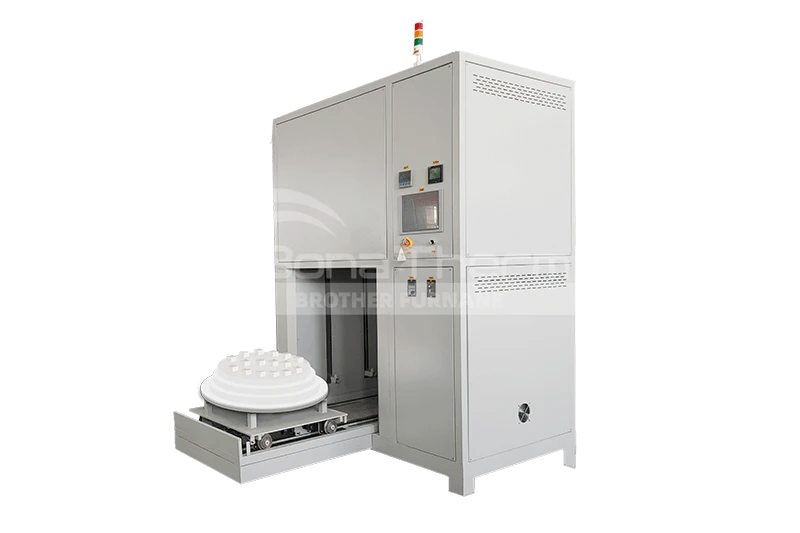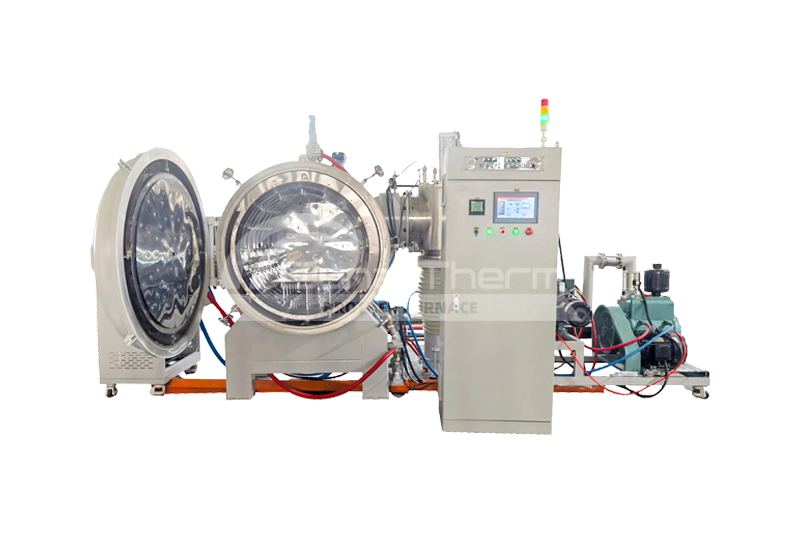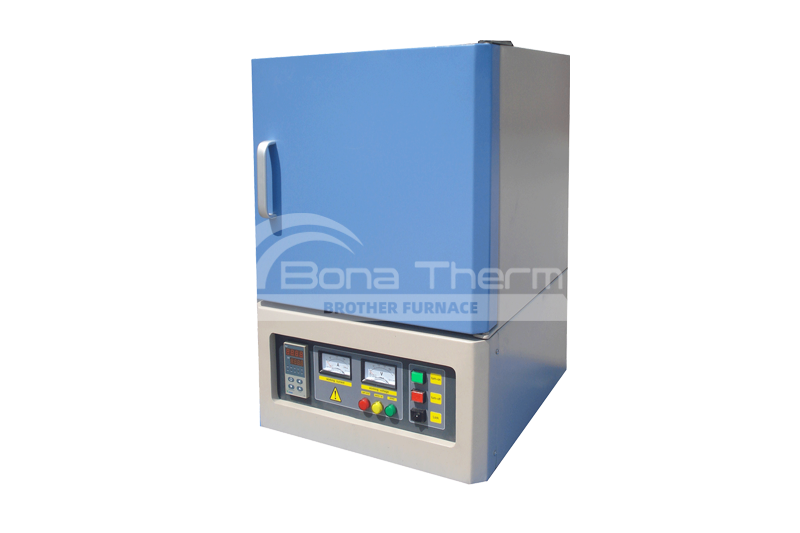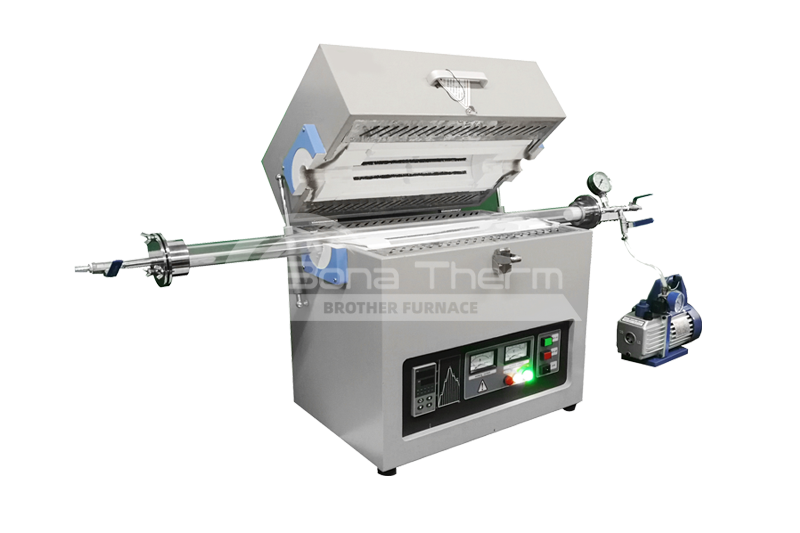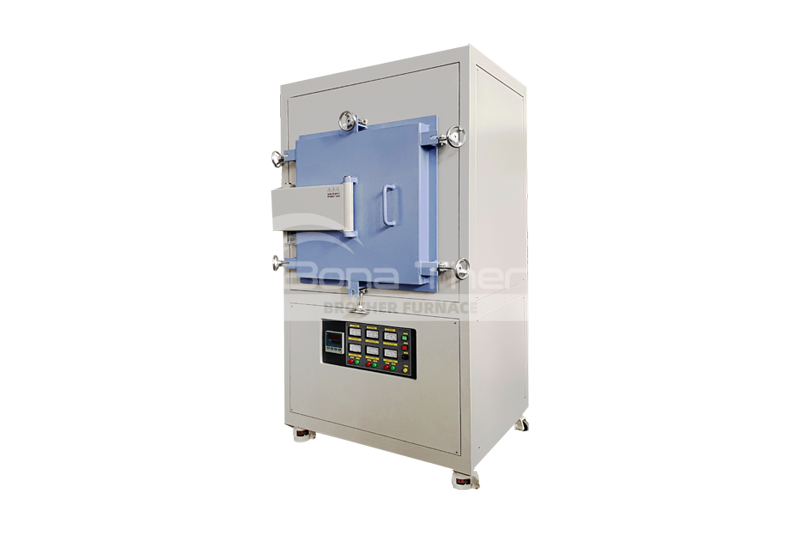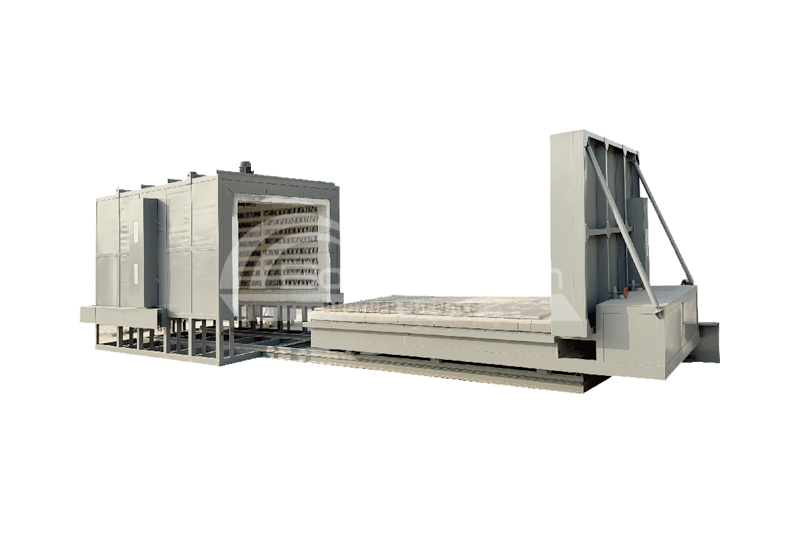Introduction
Mainly used in materials that need to be heated in a reducing atmosphere, such as metal materials, ceramic materials, glass materials, etc. Among them, metal materials are the most widely used field of hydrogen atmosphere-protected reduction furnaces, especially high-temperature alloys, powder metallurgy materials, copper, steel, and other materials that require high-temperature reduction treatment. In addition, a hydrogen atmosphere protection reduction furnace is also commonly used for heating treatment in the fields of semiconductor materials, fiber materials, composite materials, and other fields. Among them, the hydrogen debinding sintering furnace with an added wet hydrogen module is mainly used for sintering circuit substrates such as HTCC high-temperature co-fired ceramic substrates.
Features
- The entire hydrogen debinding process is automatically controlled, and the pressure can be controlled at 104kpa-120kpa.
- Equipped with wet hydrogen function, the inlet air is divided into hydrogen, nitrogen, and wet hydrogen. By controlling the flow of different gases, the dew point of the mixed gas is controlled.
- Wet hydrogen dew point meter, oxygen content analyzer, and hydrogen content analyzer can be installed.
- Equipped with a vacuum pump system and independent vacuum channel.
- The maximum heating temperature is 1600 ℃.
- The furnace material is silicon-free high-purity ceramic material. Hydrogen does not react with the furnace at high temperatures, so it can work for a long time and the furnace has a long life.
- The hydrogen furnace is equipped with explosion-proof vents to ensure safety against overpressure.
- Equipped with a hydrogen exhaust ignition system to ensure safe use.
- A debinding system can be configured. During the debinding process, the hydrogen gas flow first passes through the preheating area. After preheating, it enters the furnace from above, flows through the internal space of the furnace, and is discharged from the rear. Fine airway design, good debinding effect. The degreased mixed gas passes through the debinding collection tank, which greatly reduces the grease component in the gas, and then passes through the filter, and then ignites the gas from the ignition port. There is no blockage in the pipeline and smooth ignition, ensuring the smooth progress of the debinding experiment.
Optional Accessories
- Dew point meter
- Wet hydrogen tank
- Hydrogen content analyzer
- oxygen content analyzer
- skim tank
Structure
The furnaces are mainly divided into negative pressure furnaces and positive pressure furnaces according to their purpose and conditions. Negative pressure furnaces do not have an ignition function, while positive pressure furnaces can have an ignition function. The main function of the hydrogen furnace is realized by the combination of the furnace, wax collecting tank, wet hydrogen tank, igniter and other components. This equipment consists of furnace body, vacuum pump, air intake system, ignition system, degreasing tank, external circulation cooling system and electrical control system related parts.
Technical Parameters
model | Maximum temperature (℃) | Working temperature (℃) | Furnace size (width*height*depth) ( mm ) | Voltage ( V ) | PowerkW _ |
|---|---|---|---|---|---|
BR- 16A H2-12 | 1600 | 1500 | 200*200*300 | 220 | 8 |
- 16A H2-36 | 1600 | 1500 | 300*300*400 | 380 | 15 |
BR - 16A H2-9 6 | 1600 | 1500 | 4 00*400*600 | 380 | 30 |

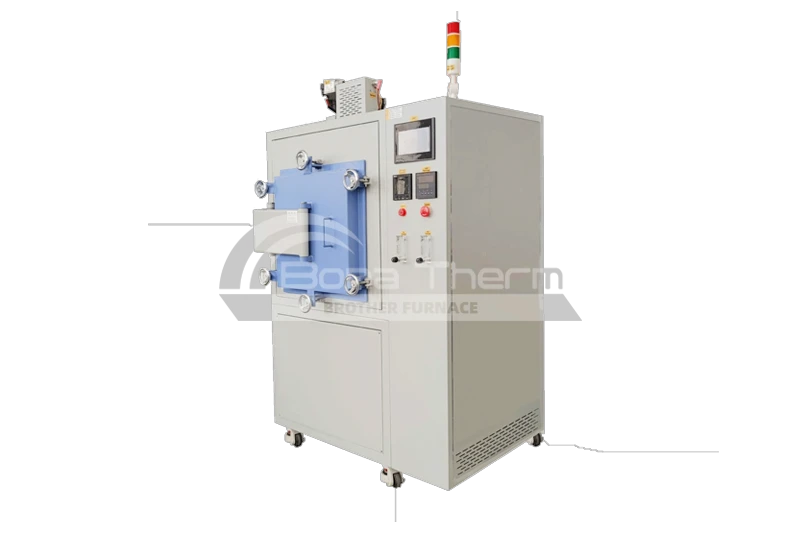
 Get Inquiry
Get Inquiry Send Email
Send Email